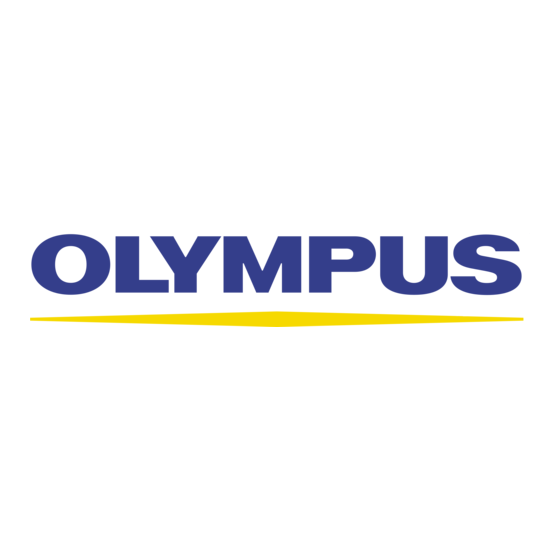Olympus BH2-6RE Podręcznik - Strona 6
Przeglądaj online lub pobierz pdf Podręcznik dla Mikroskop Olympus BH2-6RE. Olympus BH2-6RE 18 stron.

Recommended Solvents
Some sort of solvent will be needed to clean the old
grease from the components of the BH2-5RE modular
revolving nosepiece assembly. Solvents that can be
used are acetone, diethyl ether, heptane, hexane,
mineral spirits, turpentine, and xylene. Mineral spirits
works well with both Plastilube® and Mobilgrease28®.
Safety Considerations with Solvents
Regardless of which solvent is chosen, make sure that
adequate ventilation is present during the cleaning
process, and that any necessary personal protective
equipment is utilized to minimize exposure. Consult the
safety data sheet (SDS or MSDS) before using any
unfamiliar solvents. Many of the solvents listed above
are flammable and their vapors may represent an
explosion hazard if mishandled. Whichever solvents are
chosen, be sure to follow all of the manufacturer's
instructions and safety precautions.
Solvent Compatibility with Parts and Finishes
Many solvents will damage the finish of painted
surfaces or will dissolve or damage plastic parts
(isopropyl alcohol or 409 Cleaner may be safely used to
clean most painted surfaces). Do not allow untested
solvents to contact any plastic parts or painted surfaces.
Before using a solvent to clean plastic parts or painted
surfaces, test a small amount of the solvent in an
inconspicuous area (such as inside a plastic knob) to
ensure compatibility with the plastic part or painted
surface. Never use xylene to clean nylon parts, as
xylene dissolves nylon.
trichloroethylene will cause swelling of nylon due to
solvent absorption.
The list of solvents generally
considered safe for nylon includes acetone, diethyl
ether, heptane, mineral spirits, naphthalene, and
turpentine.
Before Starting the Overhaul
Remove the Objectives from the Nosepiece
Before beginning the teardown of the BH2-5RE modular
revolving nosepiece assembly, remove the nosepiece
assembly from the microscope stand and remove all of
the objectives (if present) from the revolving turret.
Store the objectives someplace where they will be
protected from physical damage, dust, and debris.
Label Parts for Identification and Reassembly
During the teardown of the BH2-6RE modular revolving
nosepiece assembly, be sure to bag and tag the various
parts as they are removed, to prevent their loss and to
facilitate their
proper identification
reassembly process.
Complete Teardown, Cleaning, and Reassembly of the Olympus BH2-6RE Modular Revolving Nosepiece
Isopropyl alcohol and
during
the
Service the BH2-6RE Modular Nosepiece
Figure 2
shows the six-position BH2-6RE modular
revolving nosepiece assembly used on the Olympus BHS
and BHT microscope stands.
Figure 2 – The BH2-6RE modular revolving nosepiece
The BH2-6RE modular revolving nosepiece assembly
consists of a six-position turret assembly, which is made
up of an inner stationary base, an outer revolving turret,
miscellaneous parts and a protective cover. Attached to
the turret assembly is a machined dovetail slide, for
mounting the BH2-6RE onto the BHS/BHT stand (see
Figure
3).
Figure 3 – Basic components of the BH2-6RE
The procedure to disassemble, clean/re-grease, and
reassemble the BH2-6RE modular revolving nosepiece
assembly is detailed in the following sections.
Remove the Dovetail Slide
The dovetail slide attaches to the stationary base of the
turret assembly via four M2.6X5 pan-head screws. Use
a suitable JIS screwdriver to remove these four M2.6X5
screws (see
Figure
4) and then remove the loose
dovetail slide from the stationary base (see
Figure
5).
Page 6 of 18
Revision 3
